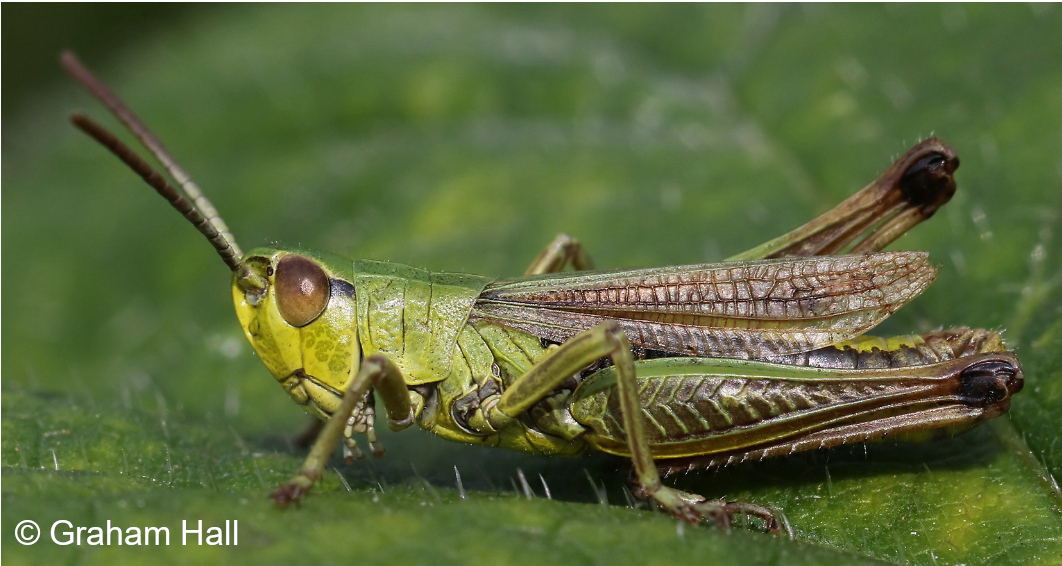Grasshoppers and Crickets
Grasshoppers and Crickets on the Somerset Levels
It’s not unreasonable to say that most people are unsure when pressed to state Cricket or Grasshopper. Many times colour is given as a differentiating factor but you get green or brown in both groups, you also get bright pink amongst the grasshoppers. Then comes the thought that it is size which again is not a guide either with both super-large and tiny species in both. So, if it’s not that then how do we put them in their separate categories? The quickest way is length of antennae: if they are long, thin and tapering, it’s a Cricket, if they are short and fairly thick, sometimes with clubbed tips, it’s a Grasshopper. Simple as that – with one exception of course.
Singing!
Not all crickets ‘sing’ and some of the songs are above our hearing range especially as we get older. Some sing by day, some by night only whilst others just don’t know when to stop. Grasshoppers only sing by day only and it’s mostly the males that sing to attract a mate. Neither ‘rub their legs together’ that’s another common misunderstanding. Crickets rub their left forewing across a hardened vein on their left wing and can keep this going for very long periods. The sound is high frequency which means it can be heard over great distances and the location pinpointed with great accuracy.


Grasshopper sound is produced by strumming sharp pegs on the leg down across a hardened vein on the wing. Using both legs simultaneously they can produce a greater volume but using legs alternately they can produce a different sound. There are other control methods such as starting softly and building up the volume but, in general, Grasshopper sound is more varied than Crickets and can be used to identify species accurately – with practice !
Identifying grasshoppers and crickets
So why are we interested in identifying them anyway? RoAM is very much about diversity recording and, where there is a counting scheme to monitor numbers, we also contribute to those national data sets. With 12 species of Grasshopper and 20+ species of Cricket in the UK it is important that we keep record of the species lists on the sites we monitor. Unlike Butterflies, Bumblebees and Dragonflies there is no counting scheme though sightings make their way to the UK Orthoptera Recording scheme through channels including iRecord.


Training with RoAM
As there is no counting scheme it is not possible to state varying levels on a year-by-year basis BUT we do want to know about species diversity and we run training classes for people who want to learn more about these and take part in maintaining records. Details of these are published in our programme and shown on our events page.
Recording grasshoppers and crickets
These are an amazingly diverse group of insects that attract the attention of many young people as well as a challenge for macro-photographers. Some are so habitat selective that their rarity easily comes under threat whilst others have been more accommodating in their food and habitat choices that they are widespread. Recognising the species is the only way we have of knowing whether the rare species are surviving.
You can read all about one of our grasshopper surveys in this recent blog post. And by joining RoAM you will be first to hear of future opportunities to search for these fascinating insects.